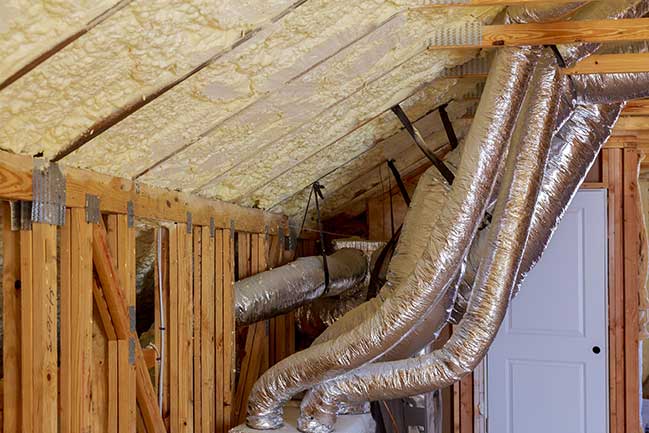SIZE MATTERS
Secondly, the surface area square footage of the ductwork is proportionally very high relative to the small volume of air that it contains. Cooled and dehumidified 55 degree air is being forced through hundreds, if not thousands depending on the size and lay-out, of square feet of ductwork surface area in a 110 to 150 degree attic with only 2 inches of insulation (if installed to code in the last several years) at an insulation value of R-6. To put this in perspective, code states that we must install an R-30 (roughly 8 inches of insulation) on our attic floor which makes up a very small ratio of surface area to volume of less cool 75 degree air in the home but states that we only need 2 inches of insulation on the ductwork which contains 55 degree air. This sounds somewhat flawed, doesn’t it? As stated by Dave Roberts and Jon Winkler of National Renewable Energy Laboratory, “In fact, we know even when it is done pretty well (which is rare), it [placing ductwork in a vented unconditioned attic] reduces system efficiency by about 20% − not a trivial number.”
IN Conclusion
Finally, and this applies more to health of the home rather than energy efficiency, the potential for ductwork to sweat is increased in a vented unconditioned attic due to the large temperature difference, especially with improper ductwork installation. This “sweating” or condensation on the ductwork may drip onto the attic insulation, soak through, and potentially reach the sheetrock. And as we all know, water and sheetrock combined makes for a great breeding ground for mold and mildew.
When we seal an attic with ductwork in it and convert this attic into a non-vented conditioned attic then we are in essence bringing the ductwork into the conditioned space of the home and reducing, or eliminating all-together, these three major concerns. The end result is greater energy efficiency, lower energy bills, increased moisture control, and a potentially much healthier interior environment.
Contact Us